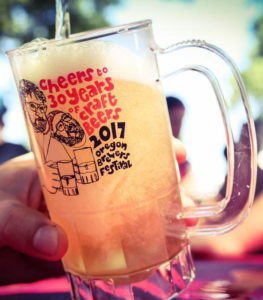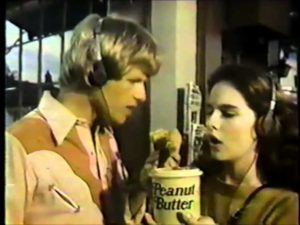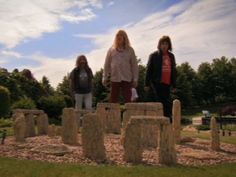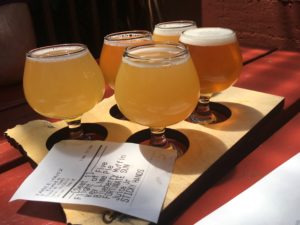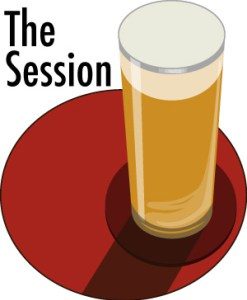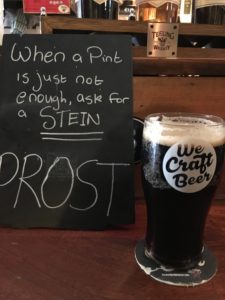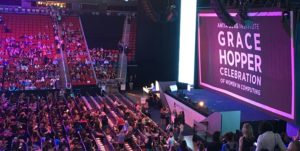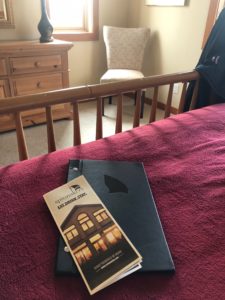 Victoria, BC, has a bit of a reputation for being 'more English than England,' and we put this notion to the test on our most recent trip across the border. It's an easy journey from Seattle, even with a toddler who can ratchet up the degree of travel difficulty considerably, but the sensible people in charge of boarding the Victoria Clipper make sure that you can pre-board with your fussy, awakened-pre-dawn child. The trip is a relatively speedy 2.5 hours, and the quick check at immigration is one of the friendliest I've ever experienced - clearly, there's something to the Canadian stereotype.
Victoria, BC, has a bit of a reputation for being 'more English than England,' and we put this notion to the test on our most recent trip across the border. It's an easy journey from Seattle, even with a toddler who can ratchet up the degree of travel difficulty considerably, but the sensible people in charge of boarding the Victoria Clipper make sure that you can pre-board with your fussy, awakened-pre-dawn child. The trip is a relatively speedy 2.5 hours, and the quick check at immigration is one of the friendliest I've ever experienced - clearly, there's something to the Canadian stereotype.
There are no water taxis this time of year (though they do have a water taxi ballet in summer, which seems something we'll need to investigate at some point), but even in less-than-ideal weather - this is the Pacific Northwest in late autumn, after all, so rain is a certainty - the walk around the harbo(u)r to our destination was pleasant. Having been deeply impressed by their beer and food on a previous visit, we opted to stay at Spinnakers, Victoria's longest-serving (and, let's be honest, best) brewpub, in business since 1984. We were not disappointed by our room, which had ample space to allow our children to ignore us when they so desired, and breakfast is included as a perk of staying on-site. (In case you were wondering and/or feeling cynical, there’s no need for any sort of 'full disclosure' here - no freebies, just a great experience). And the breakfasts are amazing - fantastic scones, a variety of great entrees and a beautiful water view; it's actually rather a good thing the water taxis weren't running, because we needed the longer walk downtown to work off the generous portions of wonderful food.
 And, of course, there's the beer. While everything was lovely, I especially enjoyed the cask bitter; our friendly, if bemused, waitress had to come ask me if I was really fondly stroking my pint. I had to explain that a great bitter is a rarity for me, so yes, it's all true. Also of special note was the Firefighter Thirst Extinguisher Session Ale - we didn't realize we had arrived on the anniversary of a large fire a year ago, but everything looked perfect - there was no sign of damage any more, and the 'thank you' beer was really quite wonderful. It could be argued that there isn't the range of 'adventurous' beers we are used to on this side of the border, but I certainly did not feel their absence.
And, of course, there's the beer. While everything was lovely, I especially enjoyed the cask bitter; our friendly, if bemused, waitress had to come ask me if I was really fondly stroking my pint. I had to explain that a great bitter is a rarity for me, so yes, it's all true. Also of special note was the Firefighter Thirst Extinguisher Session Ale - we didn't realize we had arrived on the anniversary of a large fire a year ago, but everything looked perfect - there was no sign of damage any more, and the 'thank you' beer was really quite wonderful. It could be argued that there isn't the range of 'adventurous' beers we are used to on this side of the border, but I certainly did not feel their absence.
We also did the usual tourist-y things - a tour of Parliament, a return visit to their excellent historical ghost walk (those not with the smaller member of the family also enjoyed the Chinatown history excursion), went to Munro's to buy far too many books - and then we started on the tea. We didn't make it to Murchie's last time, but visited a few times on this trip; while I'm sure the fancy high tea at the Empress is lovely, it's likely not geared toward a 3-year-old's attention span, so we opted for basic tea and cakes. I'm not sure if it's simply down to a sampling error, but on each visit it was full of transplanted Scots; it may be that Victoria is secretly more Scottish than Scotland, rather than more English than England. And a side note for people like me, who love good tea but can't have too much caffeine: Murchie's Decaf Afternoon Tea is actually good! Most decaf tea is, frankly, appalling, so this was a very welcome discovery, as was the fact that the local supermarkets stock most of the terrible British snacks and cereals I miss from living in Britain in the 1990s.
Finally, a bit of an unexpected recommendation: we had another great meal and some fine beers at the Irish Times Pub. I quite wrongly assumed it would be like every 'Irish' pub in North America - Guinness and Stella on tap, and some microwaved shepherd's pie - and while there was indeed Guinness, it was accompanied by simple, but well-prepared fresh food and a wide selection of local beers. I'm very tempted to go back again for their breakfast at some point in the future.
We've already made a list of galleries we'd like to spend more time in on a return visit; there is a wide selection of works by local First Nations artists we didn't have enough time to explore, we skipped over the major museums and gardens on this trip, and I didn't even mention the range of shoe stores that stock shoes actually made for walking - another rarity around these parts. Victoria's well-preserved (and thoughtfully re-used) older buildings are a draw, but even the new construction had me checking prices; I'd happily go back in any season.

